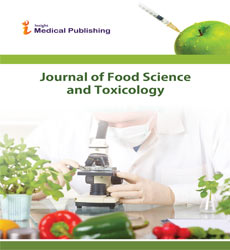Antibacterial activity on newly developed nanotechnological coatings approved for food contact
Abstract
Aims and Objectives: One of the main concerns of the food industry is microbial adhesion to food contact surfaces and consequent contamination. Stainless steel and aluminum, widely present in food industry, are frequently exposed to bacterial colonization with possible consequences on consumers’ health. We aimed to evaluate the potential bacteriostatic/bactericidal efficacy of aluminum and stainless-steel surfaces with different large-scale roughness before and after the surface coating with two different nanotechnological coatings approved for food contact.
Methods: Fifty hundred seventy-six disks of both stainless-steel (n = 288) and aluminum (n = 288) with different roughness (0.25, 0.5 and 1 μm) were challenged with four Gram-negative (Escherichia coli ATCC 25922, Salmonella typhimurium ATCC 1402, Yersinia enterocolitica ATCC 9610 and Pseudomonas aeruginosa ATCC 27588) and four Gram-positive (Staphylococcus aureus ATCC 6538, Enterococcus faecalis ATCC 29212, Bacillus cereus ATCC 14579 and Listeria monocytogenes NCTT 10888) bacteria and underwent 3 different sanitizing treatments, e.g., UV, alcohol and a natural product named Gold lotion.
Results: As far as concerns aluminum surfaces without nanotechnological surface treatment, an overall bacteriostatic effect was observed for all strains with respect to the initial inoculum that was 106 CFU/mL. Conversely, an overall bactericidal effect was observed both for Gram-negative and -positive bacteria on DURALTI®-treated aluminum disks, regardless of roughness and sanitizing treatment. Conversely, on stainless-steel surfaces, a significant bactericidal effect was exerted by all of sanitizing treatments against all bacterial strains regardless of roughness and surface coating. The nanoXHAM D coating itself induced an overall bactericidal effect as well as in synergy with all sanitizing treatments regardless of roughness.
Conclusions: Results are innovative in terms of the great potential of the antibacterial activity of nanotechnologically treated food contact surfaces and their combination with some sanitizing agents that might be exploited in the food industry. Moreover, since most of sanitizing treatments are toxic and corrosive causing the onset of crevices able to facilitate bacterial nesting and growth, nanoXHAMï?? D was also able to reduce bacterial adhesion, nesting and growth.
Open Access Journals
- Aquaculture & Veterinary Science
- Chemistry & Chemical Sciences
- Clinical Sciences
- Engineering
- General Science
- Genetics & Molecular Biology
- Health Care & Nursing
- Immunology & Microbiology
- Materials Science
- Mathematics & Physics
- Medical Sciences
- Neurology & Psychiatry
- Oncology & Cancer Science
- Pharmaceutical Sciences
